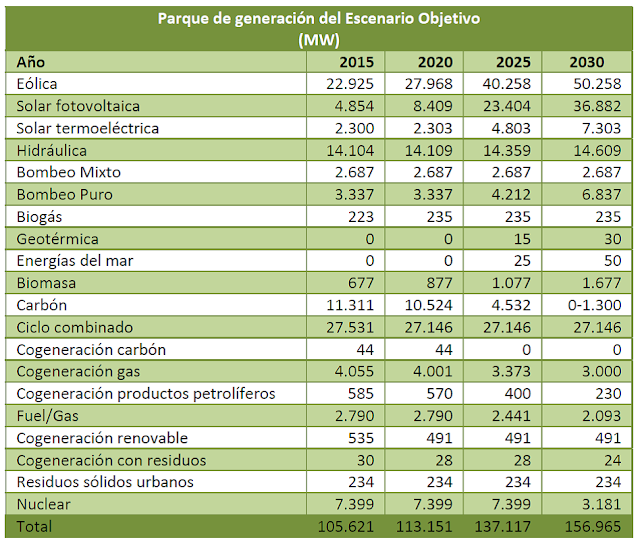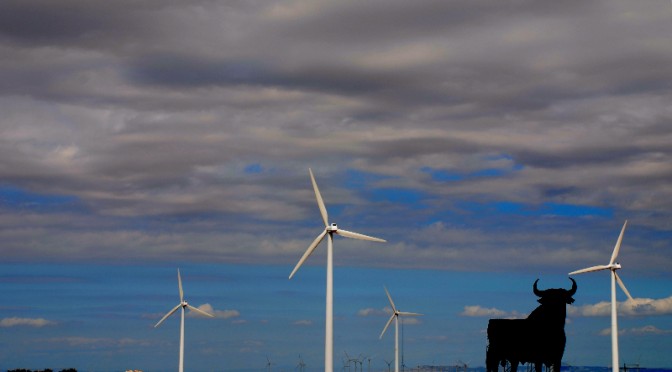Spain has 23,484 MW of wind power after growing 392 MW in 2018 v the CSIC confirms that the country is entering an era of wind speed increase, which increases interest in this technology.
Wind energy has become in the last five years one of the main technologies of the energy system in Spain, providing 19% of the electricity consumed, which is equivalent to 12 million homes, and is the second technology of the system. The estimate for 2020, once the wind turbines facilities from the last auctions are launched, is that wind farm will become the first energy source in Spain. Wind generation has represented between 18% and 21% of demand coverage in Spain in recent years, a country that continues to import, and pay for, electricity.
In Spain there are 23,484 MW of wind power installed. In 2018, the power increase was 392 MW, more than what was installed in the 2013-2017 period. Wind power adds value to the country’s economy, creating quality employment (more than 23,900 people), reducing CO2 emissions (avoiding the emission of 26 million tons / year) and stimulating local investment, as well as reducing Electricity market price at 6.8 / Mwh in 2018, according to data from the Spanish Wind Energy Association (AEE).
A study in which the Desertification Research Center (CIDE) has participated – joint center of the Higher Council for Scientific Research (CSIC), the University of Valencia and the Generalitat Valenciana-, addresses changes in wind speed over the continents on a planetary scale, with emphasis on the northern hemisphere. The work, published in the journal Nature Climate Change, demonstrates that the wind speed has been reinforced in recent years, with positive consequences in the production of wind energy, after decades of decline in its speed, a phenomenon known with the term stilling .
In this work, in which 15 scientists from different international institutions have collaborated, and which has started from wind series obtained in meteorological stations around the world since the late 1970s, he concludes that «the decrease in wind speed on surfaces continental has been interrupted since 2010, and a strengthening of winds on a planetary scale is detected from then on, ”says CSIC researcher César Azorín Molina, one of the authors of the study.
Wind intensification has been three times higher than the decrease observed from 1978 to 2010, and has had a very positive impact on the increase in wind power potential in the United States, Europe and China, among others. Wind is a substitute source for the use of fossil fuels to curb CO2 emissions and limit global warming well below the two-degree threshold established in the 2015 Paris Agreement.
According to the coordinator of the study, Zhenzhong Zeng, from Princeton University, “deepening the causes behind these changes in atmospheric circulation and winds represents a scientific challenge due to their socio-economic and environmental impacts.” “In addition, predicting these climatic cycles of strengthening and weakening winds in advance is key to optimizing wind energy production in the future,” he adds.
Wind power is the main renewable energy source in the national electricity system. It provides more than 50% of all renewable energy and, in a climate crisis scenario like the current one, it has a long way to go. The current Energy and Climate Plan of the Government is expected to double the installed capacity in 2030 compared to that installed in 2015, from 23,000 MW versus 50,000 MW.
Wind turbines are usually grouped in concentrations called wind farms in order to achieve a better use of energy, which reduces their environmental impact. It is an inexhaustible and indigenous source of energy that in 2018 supplied electricity to 19% of Spain, that is, electricity equivalent to 12 million homes.
The 23,484 MW of wind power in Spain are spread over 1,123 wind farms spread across 807 municipalities throughout the country. It is the engine of the rural communities in which it is installed.
The wind energy sector contributes more than 3,394 million euros to the national GDP, contributing to exports in more than 2,391 million euros. Currently, the group of promoters and producers is the subsector with the highest contribution to GDP in the Spanish wind sector with 1,461 million euros (2017 figure).
Wind power creates quality employment (more than 22,500 people), reduces CO2 emissions (prevents the emission of 25 million tons / year) and stimulates local investment. Spain is the fourth exporter of wind turbines and fifth for installed power in the world with 23,484 Mw, in addition to being the second technology in the energy mix, with the aforementioned 19% coverage of electricity demand.
The R&D effort made by the wind sector is much higher than the average of the Spanish economy and is also above the national and European targets for 2020. Since 2004, 1,065 patents related to generation technology have been published wind. It is an industry that continues to play a very positive role in the Spanish economy and society: it generates economic value and quality employment, exports goods and equipment, contributes to mitigate greenhouse gas emissions, reduces energy dependence and develops a relevant activity in R&D.

The roadmap proposed by the National Integrated Energy and Climate Plan for the coming decades addresses the economic, technical and social challenges that the wind sector will face in the future. The document predicts a very favorable evolution for this source of supply. According to the objectives of the PNIEC, in 2030 the expected contribution of wind power will go from the current 19% to 34% of the total national electricity demand, which will require doubling the current installed power. «These figures show the relaunching of the sector and the return to activity with capital letters. Our vision of the coming years is optimistic and the sector is prepared to face the challenge successfully, leading the way towards the Energy Transition », they point out from the sector’s employer.


